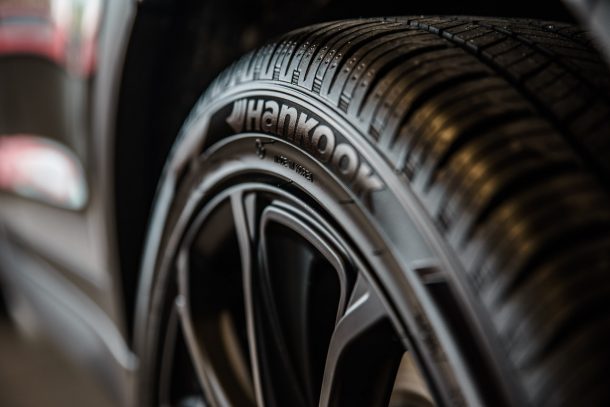Those of us who live in extreme weather are well familiar with the harsh conditions that come along with it, one of them being immediately changing our tires to suit one weather from another. When winters come, all of us are required to change our tires from summer tires to winter ones, and for summer, vice versa. The people who don’t understand the importance of using both the summer and winter tires in their respective seasons view this constant changing of tires as an annual nuisance.
However, it’s crucial that you understand that even though changing the tires again and again according to the whims of the weather is very bothersome, it is quite necessary to do so. The reason behind this is that each of these tires provide equal value – summer tires are extremely useful and necessary in summers and dry climates, while winter tires are essential in winters or cold climates. Both of these tires are specifically designed to suit the weather and by not changing your tires you put yourself at a higher risk of an accident and unnecessary costs.
Various tire companies like Red Wheels understand this and ensure that they have stock of both the winter tire set and summer car tire set, especially when you need them the most. By now you might be asking yourself what’s so special about both of these tires? Why is it necessary to use summer tires in summer and winter tires in winter? What are the differences that separate a summer car tire and a winter car tire? In this article, we aim to answer all your questions and more.
What is a summer tire?

Source: pexels.com
Summer tires are tires designed especially for warm roads and dry climates. The nature of these tires can allow them to travel on moisture-less, dried roads easily. They are also great for saving money on fuel costs as they provide more value per kilometer than other tires.
Summer tires, contrary to their name, are also often used in monsoons and rainy seasons. This is because these tires can also provide decent water resistance on wet roads to prevent slipping on them. That’s why summer tires are great for almost all seasons except the winter where they become hard to the point they are unusable. This is where winter tires come in to save the day for you and your car.
What is a winter tire?

Source: bridgevauxhall.co.uk
Winter tires, not to be confused with snow tires, are tires that ensure your vehicle keeps running safe and smooth even during winters and cold climates. They are designed to be resistant to cold temperatures below 7 degrees celsius, something summer tires are unable to do, and ride safely on snow-covered roads.
Winter tires are especially essential when it snows because they prevent the skidding of your car. With your car tires successfully changed to winter tires with the arrival of winter, you can ride in comfort knowing that you have taken all the necessary precautions for riding safely. Due to their sheer importance, winter tires are made mandatory in several European countries because they avoid more car accidents and assure driver safety.
The differences between a summer car tire and a winter car tire –
Several factors are responsible for setting both these tires apart like –
Nature of the tires and rubber content.
A winter tire consists of a higher rubber content than its summer counterpart. What this does is make the tire more malleable even in cold climates when the temperatures drop freezing low. This substantially increases the friction which in turn improves your grip and the handling of your vehicle compared to summer tires which only deteriorate and harden in cold weather.
Summer tires on the other hand are made of lesser rubber than winter tires which might not make them suitable for winter but makes them the perfect choice for when the temperature is warm and nice. Summer tires get soft when temperatures rise which makes them flexible and more suitable for wet and dry roads in hot temperatures, unlike winter tires which are reserved only for cold temperatures and environments. An additional benefit to using summer tires is that the resistance between your tires and your road is reduced which allows you to save more fuel.
The number of grooves on the tires.

Source: freepik.com
Winter tires have more grooves than summer tires which are needed to throw away water from underneath the tires so that it maintains complete contact with the road and ensures the phenomenon of aquaplaning doesn’t occur. They also help a lot when your vehicle is going over snow and ice to maintain grip.
The summer tires don’t have this kind of luxury. They have much lesser grooves than their winter partners and thus cannot drive well over snow and ice. However, lesser grooves aren’t necessary on dry roads and for wet roads, summer tires come with a unique tread pattern that ensures aquaplaning doesn’t happen. A lesser number of grooves also keep the production cost of tires at a minimum making them affordable enough for you to buy.
Tread pattern
Winter tires are manufactured with a deeper tread pattern for one specific purpose – to capture snow and use it against the other snow present on the road. You might be surprised to know that snow is the best counter to snow and that’s why winter tires have these deep treads that capture snow while driving which in turn keeps your grip maintained on snowy roads.
While summer tires suffer from the lack of particularly deep treads, the treads they have ensure a lot of things that winter tires aren’t able to do – one of these primarily being setting blocky treads that handle your vehicle to near perfection for you on all dry and hot surfaces. Your driving becomes vastly more balanced due to these treads and also significantly impacts how effective your brakes become.
Conclusion
There are considerable differences between summer and winter tires that set them apart from each other. The key takeaway is that when winters roll we should switch to winter tires and for the rest of the year summer tires are the wisest and most viable option. We hope this article helped you out and if it did, please consider following our website for regular updates as it will help us out immensely.




